Rene Magritte Giclée Fine Art Prints
1898-1967
Belgian Surrealist Painter
René François Ghislain Magritte emerged from the industrial landscape of Belgian Hainaut to become one of the most intellectually provocative artists of the twentieth century. Born in Lessines on 21 November 1898, Magritte's formative years were marked by the prosaic rhythms of provincial life - his father Léopold traded in textiles, his mother Régina shaped hats for the local bourgeoisie. This grounding in the material world of commerce and craft would later inform his peculiar genius for rendering the quotidian uncanny.
The defining trauma of Magritte's youth occurred in February 1912 when his mother drowned herself in the River Sambre. The thirteen-year-old boy's response to this catastrophe remains opaque, though psychoanalytic interpreters have perhaps too eagerly traced connections between this early loss and his later preoccupation with concealment and revelation. What can be said with certainty is that the young Magritte retreated into the discipline of drawing, beginning formal lessons in 1910 and continuing through this period of upheaval.
His artistic education at the Académie Royale des Beaux-Arts in Brussels from 1916 to 1918 proved largely uninspiring, though it exposed him to the technical foundations that would later enable his meticulous subversions of visual logic. The early paintings reveal a restless intelligence cycling through available modernist vocabularies - Impressionism gave way to a measured engagement with Futurism and the architectural Cubism of Jean Metzinger. These were exercises in fluency rather than conviction, the work of an artist still searching for his authentic voice.
The epiphanic moment arrived in 1922 when the poet Marcel Lecomte showed Magritte a reproduction of Giorgio de Chirico's The Song of Love. Magritte's response - he claimed to have wept at this first glimpse of "thought made visible" - marked his true artistic birth. That same year he married Georgette Berger, whom he had known since childhood, establishing the domestic stability that would anchor his increasingly radical pictorial experiments.
The decade following this revelation saw Magritte's gradual emergence as a singular voice within Surrealism. His move to Paris in 1927, following the commercial failure of his first Brussels exhibition, brought him into André Breton's orbit, though Magritte would always maintain a certain Belgian reserve amid the Parisian avant-garde's theatrical provocations. Unlike the automatism favored by many Surrealists, Magritte developed a paradoxically rational approach to the irrational, painting his enigmas with the clinical precision of a philosopher conducting thought experiments.
The return to Brussels in 1930 marked not a retreat but a consolidation. Working again in advertising to support himself - a practical necessity he accepted without romantic complaint - Magritte refined his mature style: that distinctive marriage of deadpan execution and conceptual audacity that would become his signature. The pipe that insists it is not a pipe, the rock suspended weightlessly in air, the bowler-hatted men multiplying across suburban skies - these became the vocabulary of a new visual language that interrogated the very foundations of representation.
The war years brought unexpected stylistic detours. His brief "Renoir period" of 1943-44, with its uncharacteristic warmth and painterly looseness, represented less an aesthetic conversion than a psychological strategy for surviving the occupation. Similarly, the deliberately crude "vache" paintings of 1947-48 functioned as a kind of calculated vandalism of his own refined aesthetic, a temporary embrace of bad taste as a form of resistance. That he supplemented his income during these lean years by forging Picassos and printing counterfeit currency adds another layer of subversion to his practice - the master of pictorial illusion literally manufacturing false realities.
The final decades brought international recognition and a return to the controlled enigmas of his classic style. The proliferation of his imagery through commercial reproduction - a phenomenon he neither resisted nor lamented - democratized his visual paradoxes even as it risked reducing them to decorative cliché. Yet Magritte's fundamental project - to reveal the arbitrary nature of our assumed relationships between words, images, and things - retained its philosophical urgency even as his bowler-hatted men became cultural shorthand for "surreal."
Magritte died of pancreatic cancer on 15 August 1967, having spent his final years in the same Brussels house where he had painted many of his most enduring images. His legacy resists simple categorization. Neither a traditional Surrealist trafficking in unconscious revelation nor a mere visual punster, Magritte operated as a kind of pictorial philosopher, using the conventional tools of representational painting to demonstrate representation's inherent instability. His influence extends far beyond Surrealism's historical moment, anticipating both Pop Art's deadpan appropriations and Conceptual Art's linguistic investigations.
What distinguishes Magritte from his contemporaries is not merely his technical precision or his intellectual rigor, but his profound understanding that the mystery he sought to evoke was not exotic or esoteric but embedded in the very fabric of daily perception. His achievement was to make the familiar strange not through distortion or exaggeration but through a kind of hyperclarity that revealed the strangeness already present in our most basic acts of seeing and naming. In this sense, his art remains perpetually contemporary, addressing questions about representation, reality, and meaning that each generation must confront anew.
The defining trauma of Magritte's youth occurred in February 1912 when his mother drowned herself in the River Sambre. The thirteen-year-old boy's response to this catastrophe remains opaque, though psychoanalytic interpreters have perhaps too eagerly traced connections between this early loss and his later preoccupation with concealment and revelation. What can be said with certainty is that the young Magritte retreated into the discipline of drawing, beginning formal lessons in 1910 and continuing through this period of upheaval.
His artistic education at the Académie Royale des Beaux-Arts in Brussels from 1916 to 1918 proved largely uninspiring, though it exposed him to the technical foundations that would later enable his meticulous subversions of visual logic. The early paintings reveal a restless intelligence cycling through available modernist vocabularies - Impressionism gave way to a measured engagement with Futurism and the architectural Cubism of Jean Metzinger. These were exercises in fluency rather than conviction, the work of an artist still searching for his authentic voice.
The epiphanic moment arrived in 1922 when the poet Marcel Lecomte showed Magritte a reproduction of Giorgio de Chirico's The Song of Love. Magritte's response - he claimed to have wept at this first glimpse of "thought made visible" - marked his true artistic birth. That same year he married Georgette Berger, whom he had known since childhood, establishing the domestic stability that would anchor his increasingly radical pictorial experiments.
The decade following this revelation saw Magritte's gradual emergence as a singular voice within Surrealism. His move to Paris in 1927, following the commercial failure of his first Brussels exhibition, brought him into André Breton's orbit, though Magritte would always maintain a certain Belgian reserve amid the Parisian avant-garde's theatrical provocations. Unlike the automatism favored by many Surrealists, Magritte developed a paradoxically rational approach to the irrational, painting his enigmas with the clinical precision of a philosopher conducting thought experiments.
The return to Brussels in 1930 marked not a retreat but a consolidation. Working again in advertising to support himself - a practical necessity he accepted without romantic complaint - Magritte refined his mature style: that distinctive marriage of deadpan execution and conceptual audacity that would become his signature. The pipe that insists it is not a pipe, the rock suspended weightlessly in air, the bowler-hatted men multiplying across suburban skies - these became the vocabulary of a new visual language that interrogated the very foundations of representation.
The war years brought unexpected stylistic detours. His brief "Renoir period" of 1943-44, with its uncharacteristic warmth and painterly looseness, represented less an aesthetic conversion than a psychological strategy for surviving the occupation. Similarly, the deliberately crude "vache" paintings of 1947-48 functioned as a kind of calculated vandalism of his own refined aesthetic, a temporary embrace of bad taste as a form of resistance. That he supplemented his income during these lean years by forging Picassos and printing counterfeit currency adds another layer of subversion to his practice - the master of pictorial illusion literally manufacturing false realities.
The final decades brought international recognition and a return to the controlled enigmas of his classic style. The proliferation of his imagery through commercial reproduction - a phenomenon he neither resisted nor lamented - democratized his visual paradoxes even as it risked reducing them to decorative cliché. Yet Magritte's fundamental project - to reveal the arbitrary nature of our assumed relationships between words, images, and things - retained its philosophical urgency even as his bowler-hatted men became cultural shorthand for "surreal."
Magritte died of pancreatic cancer on 15 August 1967, having spent his final years in the same Brussels house where he had painted many of his most enduring images. His legacy resists simple categorization. Neither a traditional Surrealist trafficking in unconscious revelation nor a mere visual punster, Magritte operated as a kind of pictorial philosopher, using the conventional tools of representational painting to demonstrate representation's inherent instability. His influence extends far beyond Surrealism's historical moment, anticipating both Pop Art's deadpan appropriations and Conceptual Art's linguistic investigations.
What distinguishes Magritte from his contemporaries is not merely his technical precision or his intellectual rigor, but his profound understanding that the mystery he sought to evoke was not exotic or esoteric but embedded in the very fabric of daily perception. His achievement was to make the familiar strange not through distortion or exaggeration but through a kind of hyperclarity that revealed the strangeness already present in our most basic acts of seeing and naming. In this sense, his art remains perpetually contemporary, addressing questions about representation, reality, and meaning that each generation must confront anew.
8 Rene Magritte Artworks
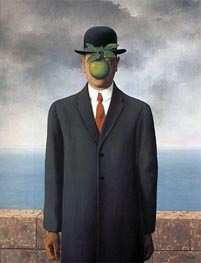
Giclée Canvas Print
$71.01
$71.01
SKU: 16622-MAG
Rene Magritte
Original Size:116 x 89 cm
Private Collection
Rene Magritte
Original Size:116 x 89 cm
Private Collection
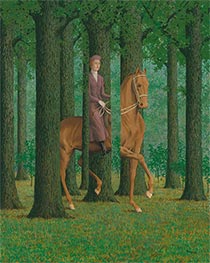
Giclée Canvas Print
$74.40
$74.40
SKU: 18517-MAG
Rene Magritte
Original Size:81.3 x 65.1 cm
National Gallery of Art, Washington, USA
Rene Magritte
Original Size:81.3 x 65.1 cm
National Gallery of Art, Washington, USA
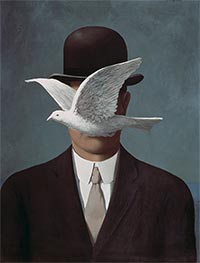
Giclée Canvas Print
$70.85
$70.85
SKU: 18122-MAG
Rene Magritte
Original Size:63.5 x 48 cm
Private Collection
Rene Magritte
Original Size:63.5 x 48 cm
Private Collection
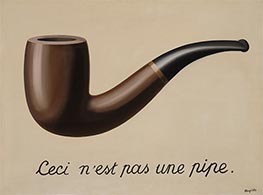
Giclée Canvas Print
$68.82
$68.82
SKU: 18118-MAG
Rene Magritte
Original Size:60.3 x 79 cm
Los Angeles County Museum of Art, California, USA
Rene Magritte
Original Size:60.3 x 79 cm
Los Angeles County Museum of Art, California, USA
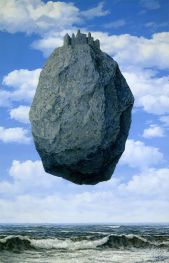
Giclée Canvas Print
$61.36
$61.36
SKU: 19386-MAG
Rene Magritte
Original Size:200 x 145 cm
The Israel Museum, Jerusalem, Israel
Rene Magritte
Original Size:200 x 145 cm
The Israel Museum, Jerusalem, Israel
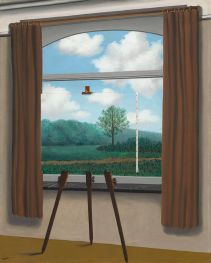
Giclée Canvas Print
$74.74
$74.74
SKU: 19390-MAG
Rene Magritte
Original Size:100 x 81 cm
National Gallery of Art, Washington, USA
Rene Magritte
Original Size:100 x 81 cm
National Gallery of Art, Washington, USA
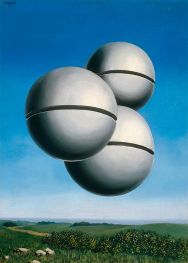
Giclée Canvas Print
$66.45
$66.45
SKU: 19389-MAG
Rene Magritte
Original Size:72.7 x 54.2 cm
Solomon R. Guggenheim Museum, New York, USA
Rene Magritte
Original Size:72.7 x 54.2 cm
Solomon R. Guggenheim Museum, New York, USA
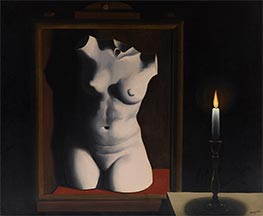
Giclée Canvas Print
$76.09
$76.09
SKU: 18154-MAG
Rene Magritte
Original Size:61 x 73.6 cm
Dallas Museum of Art, Texas, USA
Rene Magritte
Original Size:61 x 73.6 cm
Dallas Museum of Art, Texas, USA